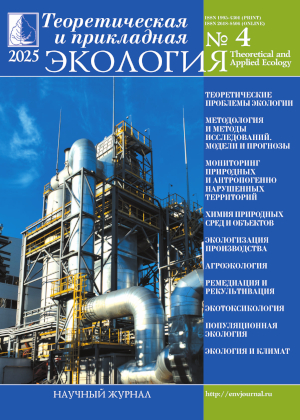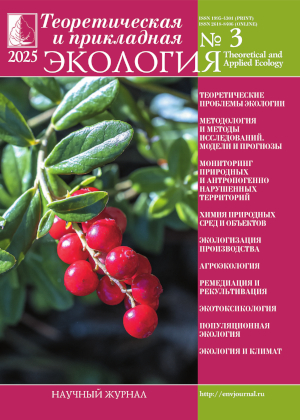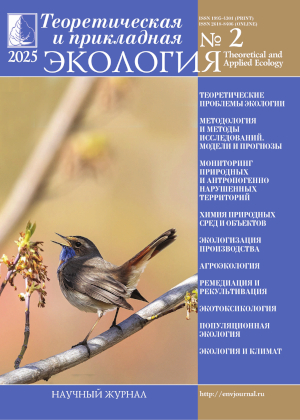 ISSN 1995-4301
ISSN 1995-4301(Print)
ISSN 2618-8406
(Online)
Online version of the journal
|
Effect of stocking density on larval development of the Natterjack toad (Epidalea calamita), based on the laboratory results |
||||
| A.A. Kidov, R.A. Ivolga, T.E. Kondratova, O.S. Groda, V.V. Demyanchik, V.O. Erashkin, E.A. Kidova | ||||
| Section: Population ecology |
||||
| The Natterjack toad (Epidalea calamita) is widespread in Europe, but it is reducing in numbers, especially in the north and east of its range. The paper presents the results of studying the effect of initial stocking density on survival, development duration and body length of E. calamita larvae in laboratory conditions. The experiments used containers with the same bottom area (1092 cm2), but with different water levels (14 and 28 cm). Larvae were grown at different stocking densities per unit volume (1–3 larvae/L) of water and per unit area of the bottom (82.4–494.5 larvae/m2). The studied larvae have very high survival rate (90.7–100.0%) and show no differences in this parameter in groups in all variants of cultivation. Animals from the lowest density groups were characterized by the shortest developmental duration. With an increase in the stocking density per unit volume of water and bottom area the larval development duration increased. There was a negative correlation of body length with the initial stocking density per unit volume of water (r=-0.52) and bottom area (r=-0.62). The stocking density per the bottom area affected greater the larval developmental duration and body length of juvenile toads, than the stocking density per unit water volume. The authors note that it is advisable to grow E. calamita larvae in laboratory conditions at maximum stocking density (3 larvae/L and 494.5 larvae/m2), as this allows for a greater number of juvenile toads. | ||||
| Keywords: zooculture, captive breeding, tailless amphibians, density, survival |
||||
| Link | ||||
  |
||||
| Article published in number 3 for 2024 DOI: 10.25750/1995-4301-2024-3-217-225 |
||||
|
|
36, Moskovskya street, Kirov, 610000, Editorial Board "Theoretical and Applied Ecology." Phone/fax: (8332) 37-02-77 e-mail: envjournal@vyatsu.ru The journal was founded in 2007 |
||||||




 Select viewing options
Select viewing options